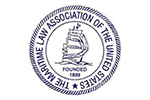Wrongful Death Attorneys
Washington Based Flight-Seeing Plane Crash Causes Injury and Death to Cruise Ship Passengers
A cruise ship passenger is now dead following the crash of a sight-seeing plane that flew into the side of a mountain. Five passengers are also injured, one suffering from a broken back and the other a broken leg. The passengers were all originally onboard an Alaskan cruise ship that specializes in expedition-style cruises that focus on up-close encounters with nature.
Passengers now regularly participate in day excursions encouraged or provided by cruise ship companies as part of the cruise experience. Excursion destinations are often reached by a smaller watercraft or plane, or involve the use of equipment like jet skis or motorized bikes. Maritime law has long established that a duty of reasonable care is owed in a carrier-passenger relationship. The 9th Circuit Court of Appeals has held that in discharging this duty of reasonable care, a carrier of passengers “must maintain a reasonable, safe means for a passenger to disembark” and must “render such services as are reasonably necessary to get a passenger safely ashore.” Marshall v. Westfal-Larsen & Co., 259 F.2d 575, 577 (9th Cir.1958).
In Chan v. Society Expeditions, Inc., 123 F.3d 1287, (9th Cir. 1994), a family vacationing on a cruise ship chartered by a Washington-based company decided to go an excursion. The excursion required passengers to board an inflatable raft to be ferried to Makatea in French Polynesia. As the last group of passengers were being ferried, the raft turned broadside to a wave and capsized. This caused severe injuries to the father and daughter named in the suit. The family members asserted general maritime claims based on negligence and the doctrine of seaworthiness against the Washington-based excursion company. The excursion company attempted to remove itself from liability by claiming the father, as a passenger, was unable to file a claim regarding the unseaworthiness of the vessel. The Court of Appeals agreed with the injured father, saying that the injured parties have a right to sue the excursion company as a passenger with a general claim in admiralty for negligence.
The excursion company also tried to limit the daughter’s claim for emotional stress caused by the accident. The lower court dismissed the daughter’s claim that her injury and presence in the capsized raft caused the negligent infliction of emotional distress by seeing her father seriously injured. However, the Court of Appeals determined that emotional distress claims were cognizable under admiralty law, and that the daughter qualified to file this type of claim by sustaining injuries herself and by her presence in the raft. Three theories exist as to who can file a suit, the “zone of danger” doctrine, the “physical injury or impact rule”, and the “bystander proximity rule”. In Washington, the “bystander proximity” rule is applied, and this allows recovery, even if the person was not in the “zone of danger” if they were physically near the scene of the accident, if they personally observed the accident, and if they were closely related to the victim.
Gordon Webb and John Merriam of Seattle Maritime Attorneys specialize in claims involving cruise ship injuries and claims against shore excursion operators. For help and or a free consultation please call 1-877.800.1007.













